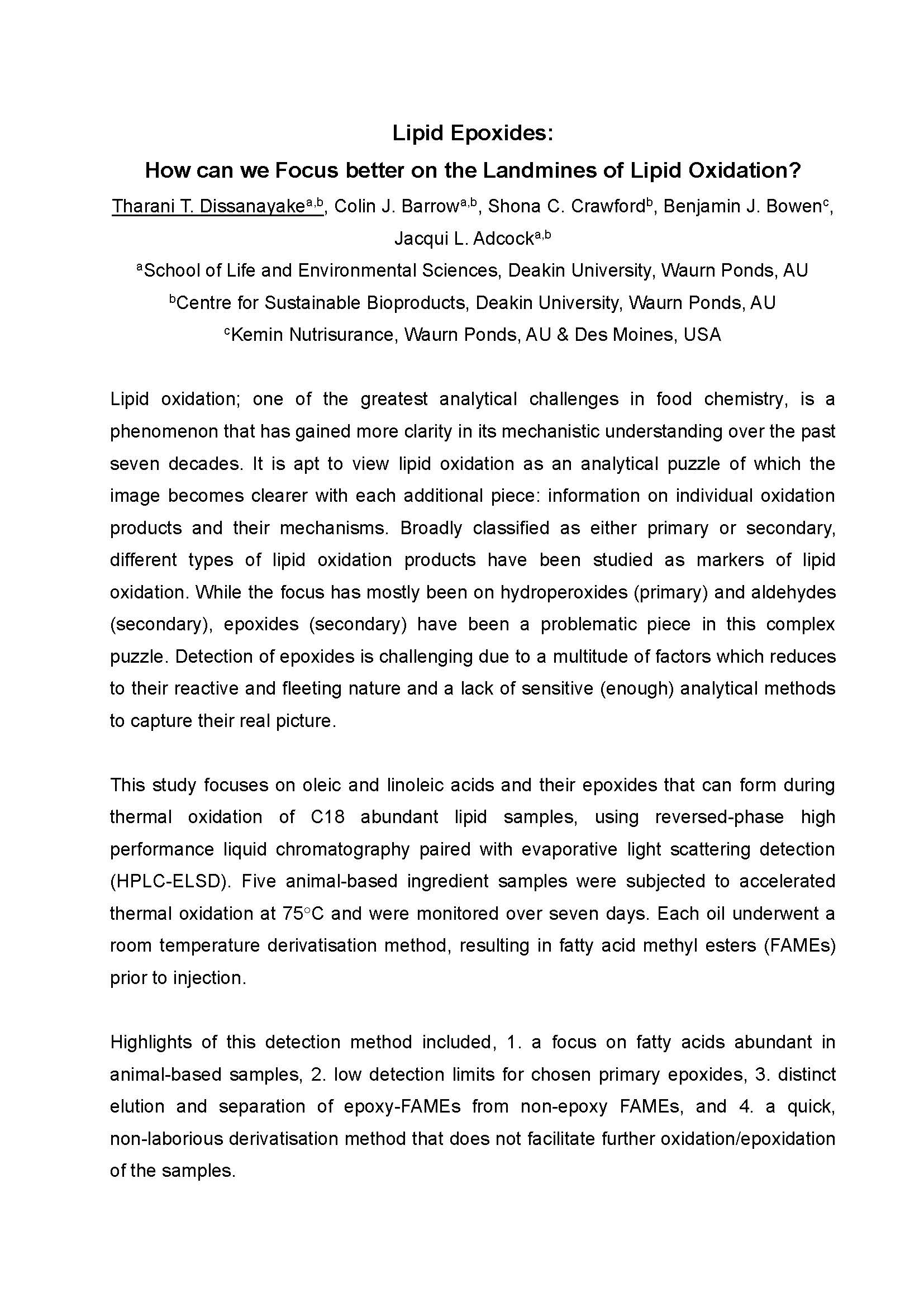Lipid oxidation; one of the greatest analytical challenges in food chemistry, is a phenomenon that has gained more clarity in its mechanistic understanding over the past seven decades. It is apt to view lipid oxidation as an analytical puzzle of which the image becomes clearer with each additional piece: information on individual oxidation products and their mechanisms. Broadly classified as either primary or secondary, different types of lipid oxidation products have been studied as markers of lipid oxidation. While the focus has mostly been on hydroperoxides (primary) and aldehydes (secondary), epoxides (secondary) have been a problematic piece in this complex puzzle. Detection of epoxides is challenging due to a multitude of factors which reduces to their reactive and fleeting nature and a lack of sensitive (enough) analytical methods to capture their real picture.
This study focuses on oleic and linoleic acids and their epoxides that can form during thermal oxidation of C18 abundant lipid samples, using reversed-phase high performance liquid chromatography paired with evaporative light scattering detection (HPLC-ELSD). Five animal-based ingredient samples were subjected to accelerated thermal oxidation at 75°C and were monitored over seven days. Each oil underwent a room temperature derivatisation method, resulting in fatty acid methyl esters (FAMEs) prior to injection.
Highlights of this detection method included, 1. a focus on fatty acids abundant in animal-based samples, 2. low detection limits for chosen primary epoxides, 3. distinct elution and separation of epoxy-FAMEs from non-epoxy FAMEs, and 4. a quick, non-laborious derivatisation method that does not facilitate further oxidation/epoxidation of the samples.
